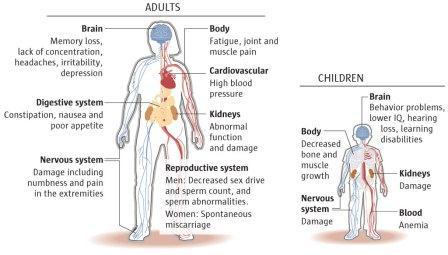
The following is a guide to the standards on lead exposure set by the Centers for Disease Control and Prevention, the U.S. public health monitor, and other health authorities. Lead exposure is measured in micrograms per deciliter of blood.
>0 (µg/dL): Even at birth, all people have some lead in their blood. However, the CDC says no level of exposure has been deemed safe for children.
1.0 - 1.3 (µg/dL): Average blood lead level among U.S. children ages 1-5.
3.5 (µg/dL): The CDC is considering using this level as a new "reference value" to identify children under age six with elevated blood lead levels. The threshold is lowered periodically to reflect new data from a national health and nutritional survey.
5 (µg/dL): The CDC’s current reference level for an elevated childhood blood level that warrants public health action, close monitoring or case management. Some 500,000 U.S. children are at or above this level, which some states define as lead poisoning.
10 (µg/dL): Children who reach this threshold require closer attention and action to limit further lead exposure. Many states conduct inspections of the poisoned child’s living environment to identify exposure sources. Research shows that a blood lead level of 10 (µg/dL) can lower IQ by 4 to 6 points on average.
45 (µg/dL): Poisoning that may require hospitalization and chelation drug treatment, which helps the body to excrete lead. The drugs aren’t considered effective for children with lower blood lead levels.
>70 (µg/dL): Left unchecked, acute lead poisoning can cause seizures, coma and death.
Source: Reuters
 FR
FR EN
EN AR
AR








